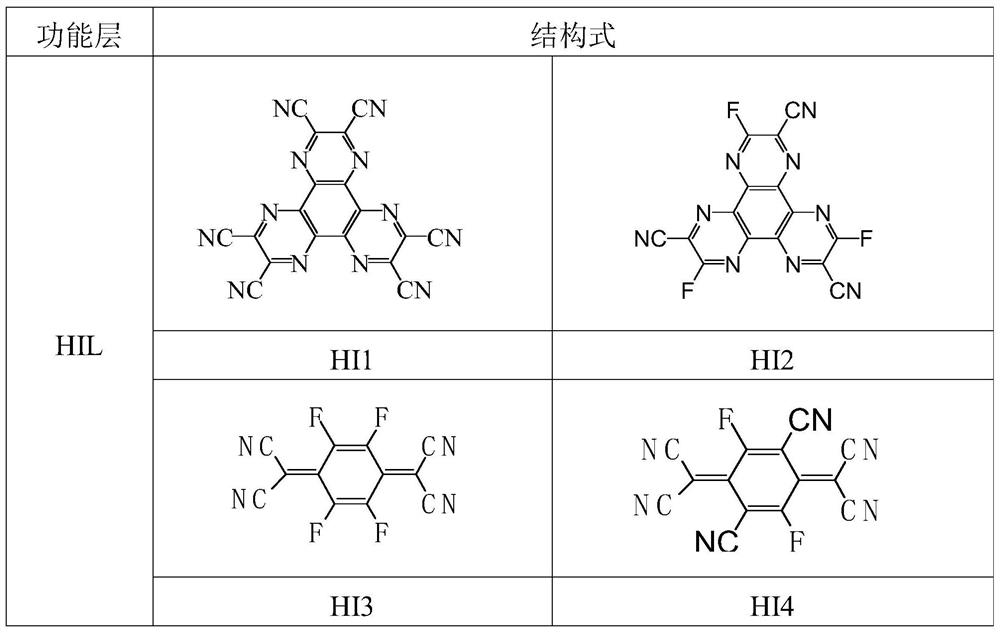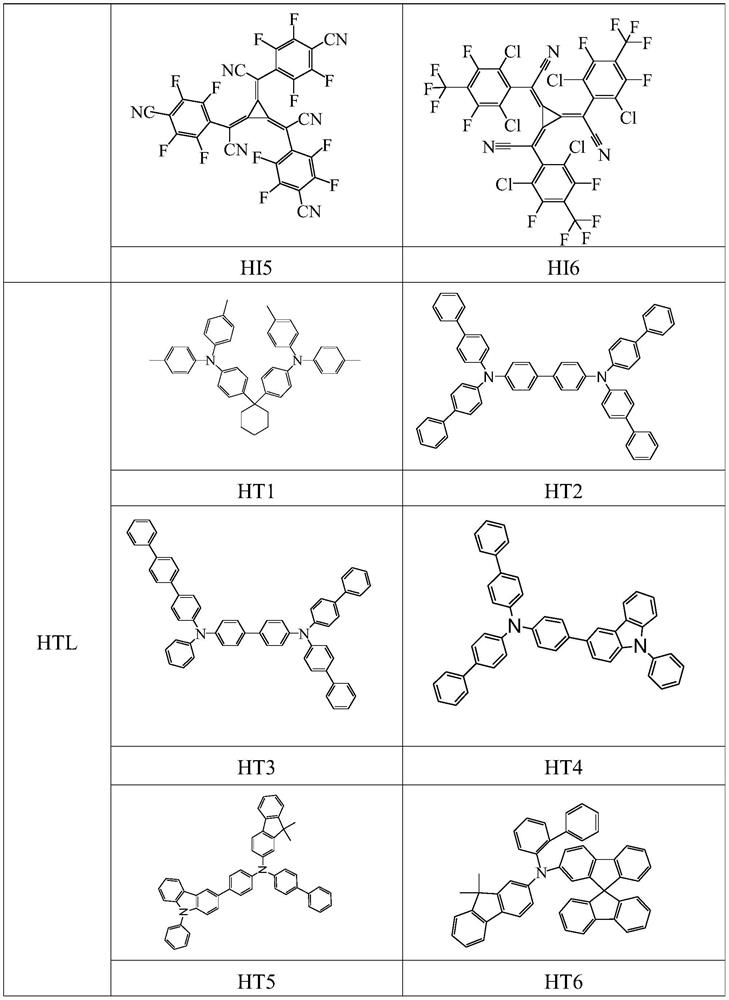A kind of organic electroluminescent device containing triazine compound and its application
An electroluminescent device and compound technology, applied in the field of organic electroluminescent devices, can solve the problems of difficult and high exciton utilization rate, high fluorescence radiation efficiency, low S1 state radiation transition rate, efficiency roll-off and the like
- Summary
- Abstract
- Description
- Claims
- Application Information
AI Technical Summary
Problems solved by technology
Method used
Image
Examples
Embodiment 1
[0064] The synthesis of embodiment 1 compound 1
[0065]
[0066] In a 500ml four-neck flask, under nitrogen atmosphere, add 0.01mol 2-chloro-4,6-diphenyl-[1,3,5]triazine, 0.03mol 6,6-dimethyl-11- p-Phenylboronic acid-6,11-dihydro-13-oxa-11-aza-indole[1,2-b]anthracene, dissolved in a mixed solvent (180ml toluene, 90ml ethanol), then added 0.03molNa 2 CO 3 aqueous solution (2M), then add 0.0001molPd (PPh 3 ) 4 , heated to reflux for 10-24 hours, sampled and plated, the reaction was complete. Naturally cooled, filtered, the filtrate was rotary evaporated, and passed through a silica gel column to obtain the target product with an HPLC purity of 98.2% and a yield of 64.00%.
[0067] Elemental analysis structure (molecular formula C 42 h 30 N 4 O): theoretical value C, 83.14; H, 4.98; N, 9.23; O, 2.64; tested value: C, 83.21; H, 4.92; N, 9.20;
[0068] HPLC-MS: The molecular weight of the material is 606.24, and the measured molecular weight is 606.31.
Embodiment 2
[0069] The synthesis of embodiment 2 compound 2
[0070]
[0071] In a 500ml four-necked flask, add 0.01mol of 2-chloro-4-phenyl-6-[1,1'; 3',1″]triphenyl-5'-yl-[1 ,3,5]triazine, 0.03mol 6,6-dimethyl-11-m-phenylboronic acid-6,11-dihydro-13-oxa-11-aza-indole[1,2-b] Anthracene, dissolved in a mixed solvent (180ml toluene, 90ml ethanol), then added 0.03molNa 2 CO 3 aqueous solution (2M), then add 0.0001molPd (PPh 3 ) 4 , heated to reflux for 10-24 hours, sampled and plated, the reaction was complete. Naturally cooled, filtered, the filtrate was rotary evaporated, and passed through a silica gel column to obtain the target product with a HPLC purity of 99.6% and a yield of 64.00%.
[0072] Elemental analysis structure (molecular formula C 54 h 38 N 4 O): theoretical value C, 85.46; H, 5.05; N, 7.38; O, 2.11; tested value: C, 85.52;
[0073] HPLC-MS: The molecular weight of the material is 758.30, and the measured molecular weight is 758.52.
Embodiment 3
[0074] The synthesis of embodiment 3 compound 3
[0075]
[0076] The preparation method of compound 3 is the same as in Example 2, except that the raw material 2-chloro-4-(3,5-dimethylbenzene)-6-phenyl-[1,3,5]triazine replaces 2-chloro -4-Phenyl-6-[1,1';3',1"]triphenyl-5'-yl-[1,3,5]triazine.
PUM
| Property | Measurement | Unit |
|---|---|---|
| thickness | aaaaa | aaaaa |
| thickness | aaaaa | aaaaa |
| thickness | aaaaa | aaaaa |
Abstract
Description
Claims
Application Information
 Login to View More
Login to View More - R&D
- Intellectual Property
- Life Sciences
- Materials
- Tech Scout
- Unparalleled Data Quality
- Higher Quality Content
- 60% Fewer Hallucinations
Browse by: Latest US Patents, China's latest patents, Technical Efficacy Thesaurus, Application Domain, Technology Topic, Popular Technical Reports.
© 2025 PatSnap. All rights reserved.Legal|Privacy policy|Modern Slavery Act Transparency Statement|Sitemap|About US| Contact US: help@patsnap.com



